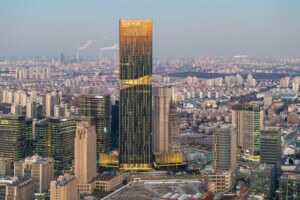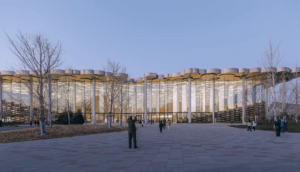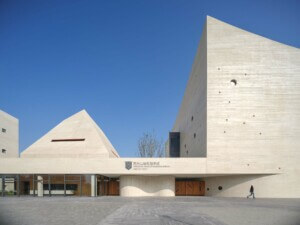Jiaxing is a historic city 60 miles southwest of Shanghai. There, MAD Architects—an international office with locations in Beijing, Rome, Jiaxing, and Los Angeles founded by Ma Yansong—has completed a new train station, marking the studio’s first transportation infrastructure reconstruction and expansion project.
MAD Architects was tasked with replacing a dysfunctional train station that operated in Jiaxing between 1995 and 2019. The defunct station was only 43,000-square-feet, too small for a city of 1.4 million people, and counting. The new train station was designed to facilitate growth in the rapidly expanding city, and its design is emblematic of the avant-garde, experimental studio’s repertoire.

“We should rethink and redefine the spatial patterns of such transportation infrastructure buildings in China,” said Ma Yansong after completing the station. “We can break away from the common pursuit of grandiose monumental buildings and make them urban public spaces with transport functions, natural ecology and cultural life, where citizens are happy to go, stay, meet, and enjoy.”
The renovated railway station now has six lines and three platforms (the previous iteration from 1995 had five lines and three platforms) with two arrival and departure lines on each of the upstream and downstream lines. This new capacity will help the station accommodate an anticipated 5 million people a year, with an hourly capacity of 2,500 people at peak hours.
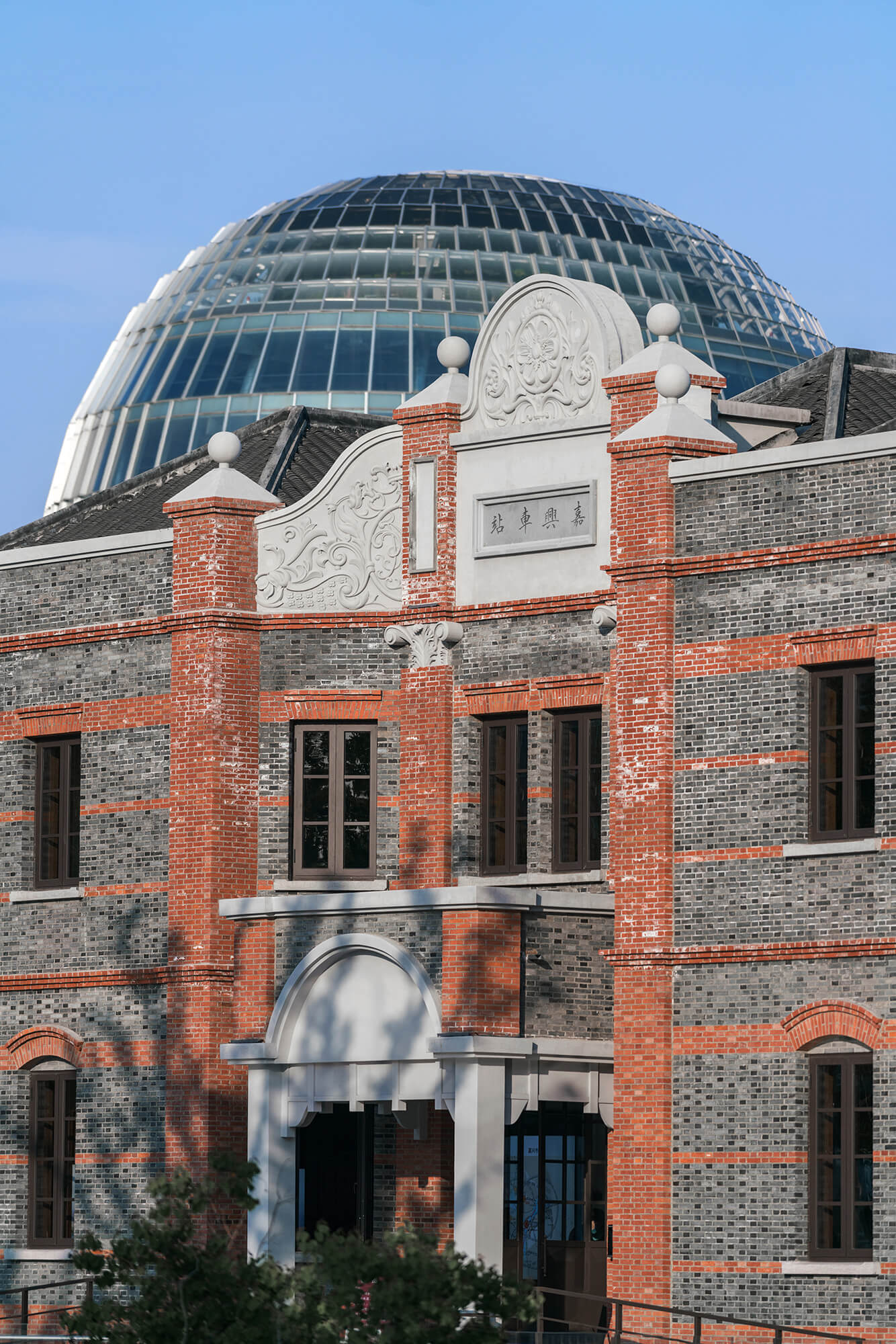
To innovate and riff on contemporary train stations getting built in China today, MAD Architects looked to the past. Designers opted to create a full-scale recreation of the original 1907 train station that stood onsite before its second counterpart from 1995. The reconstructed station was built using 210,000 red and green bricks made of mud from a nearby lake, and other locally sourced materials.
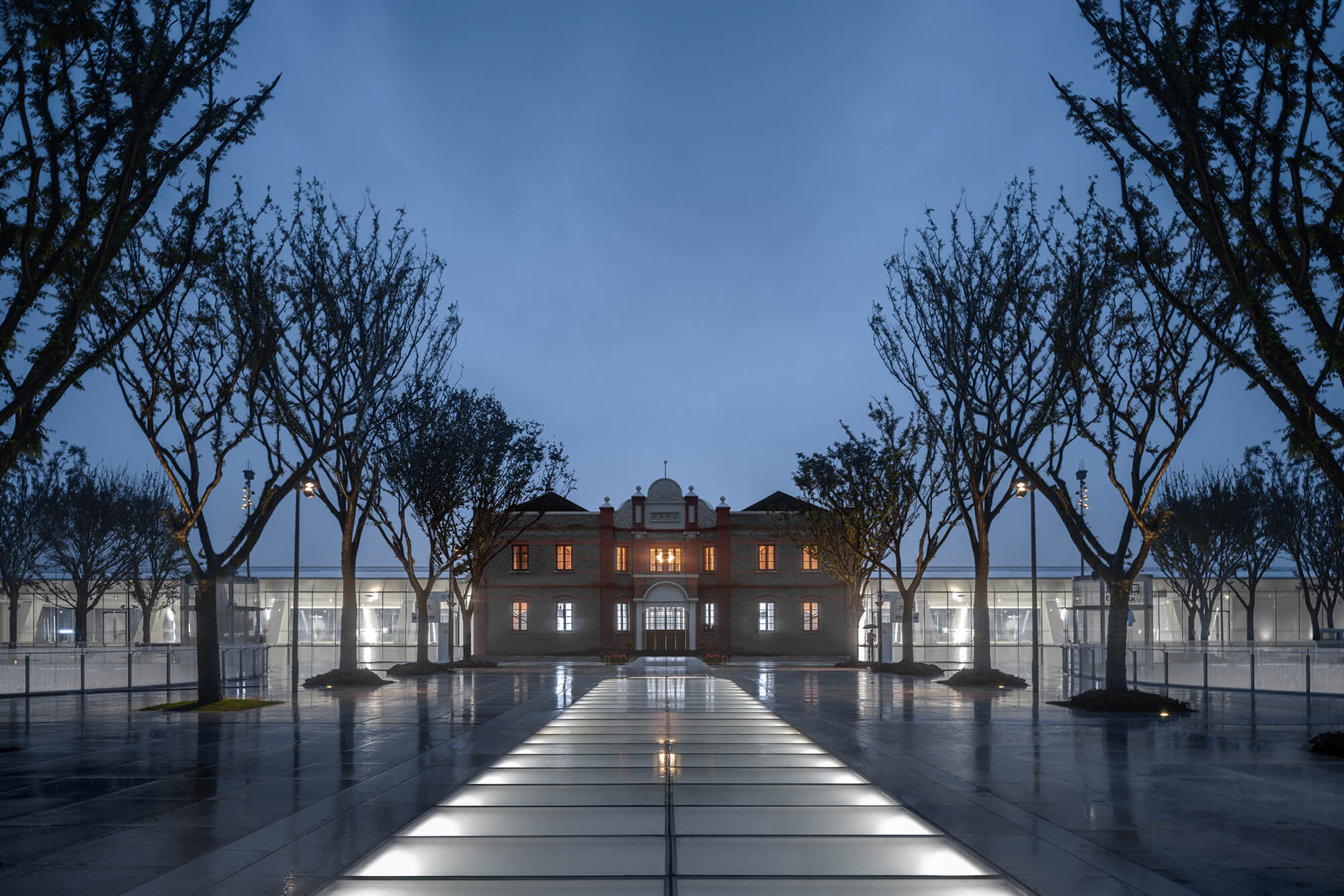
The interiors at the fully-reconstructed 1907 station maintain a dialogue stay true to the original design. The reconstructed station’s waiting hall, ceiling, and tunnel walls are clad with anodized aluminum honeycomb panels. This, MAD said, will absorb excess noise. Above the reconstructed hub, MAD specified a “floating” metal roof lofted above the expanded site equipped with solar panels that power the station, the architects said.
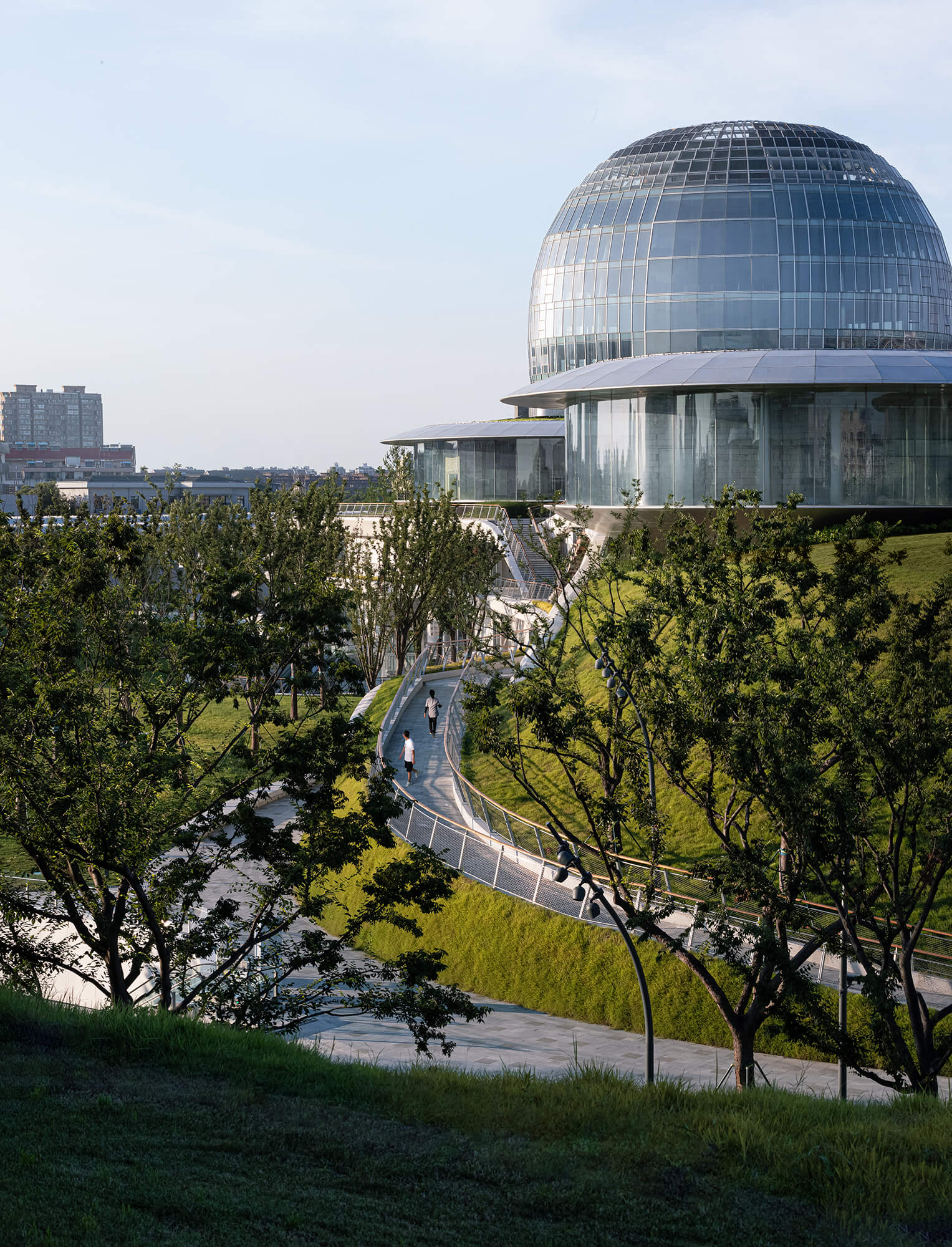
The new station’s major transport and commercial functions—i.e. its entry and exit platforms, and waiting halls—were tucked underground. This breaks with traditional station design thinking, MAD said, and gives birth to a new typology, or what the architects call a “train station in the forest” design. By placing these critical functions below grade, MAD was able to plant over 1,500 trees at street level, including beech, camphor, osmanthus, maple, sebifera, sequoia, and cherry blossoms.
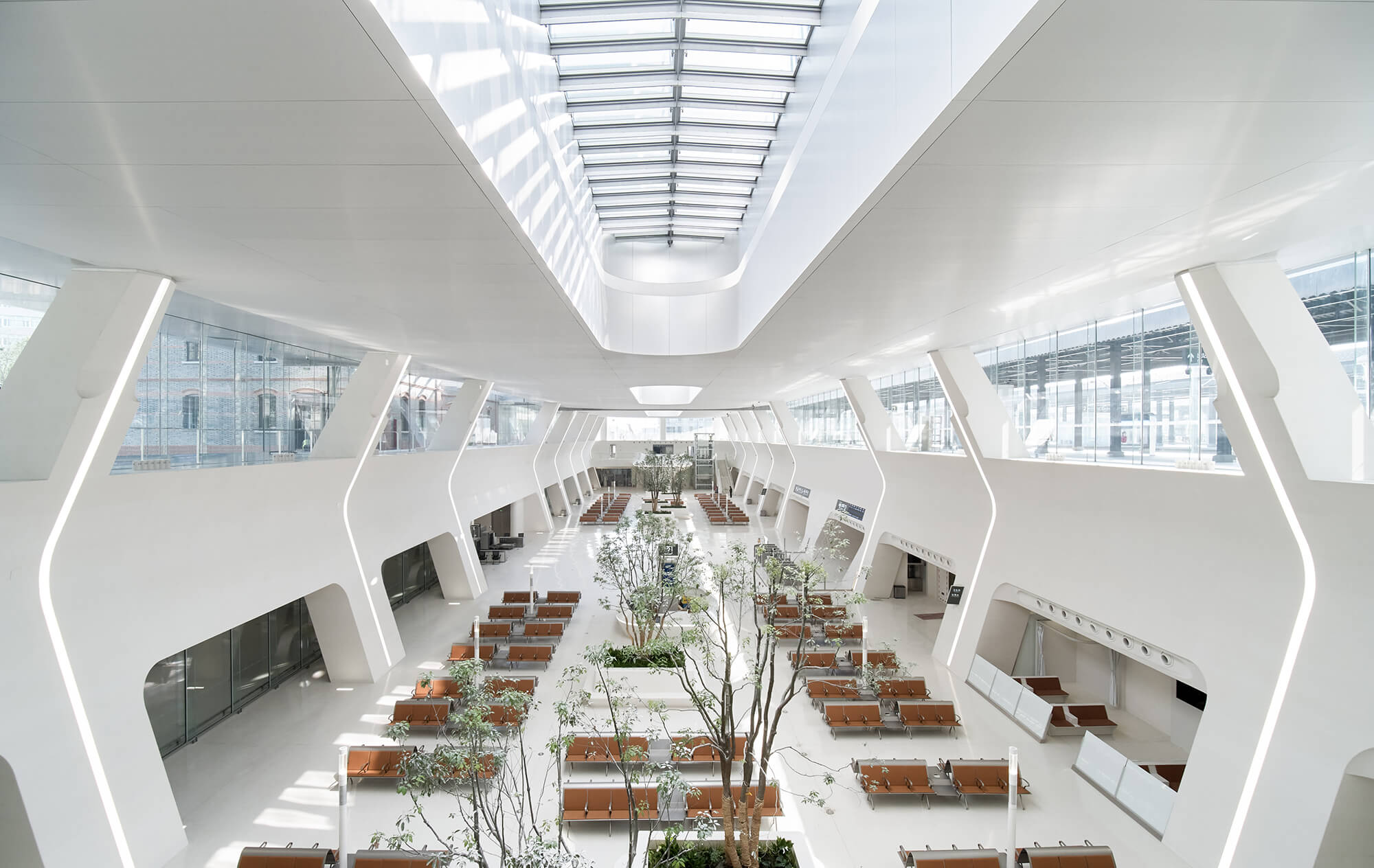
“The spiritual axis, which contains the recreated 1907 building, is marked with beech trees that, when fully formed, will create a canopy across the entire north square in front of the station,” MAD said.

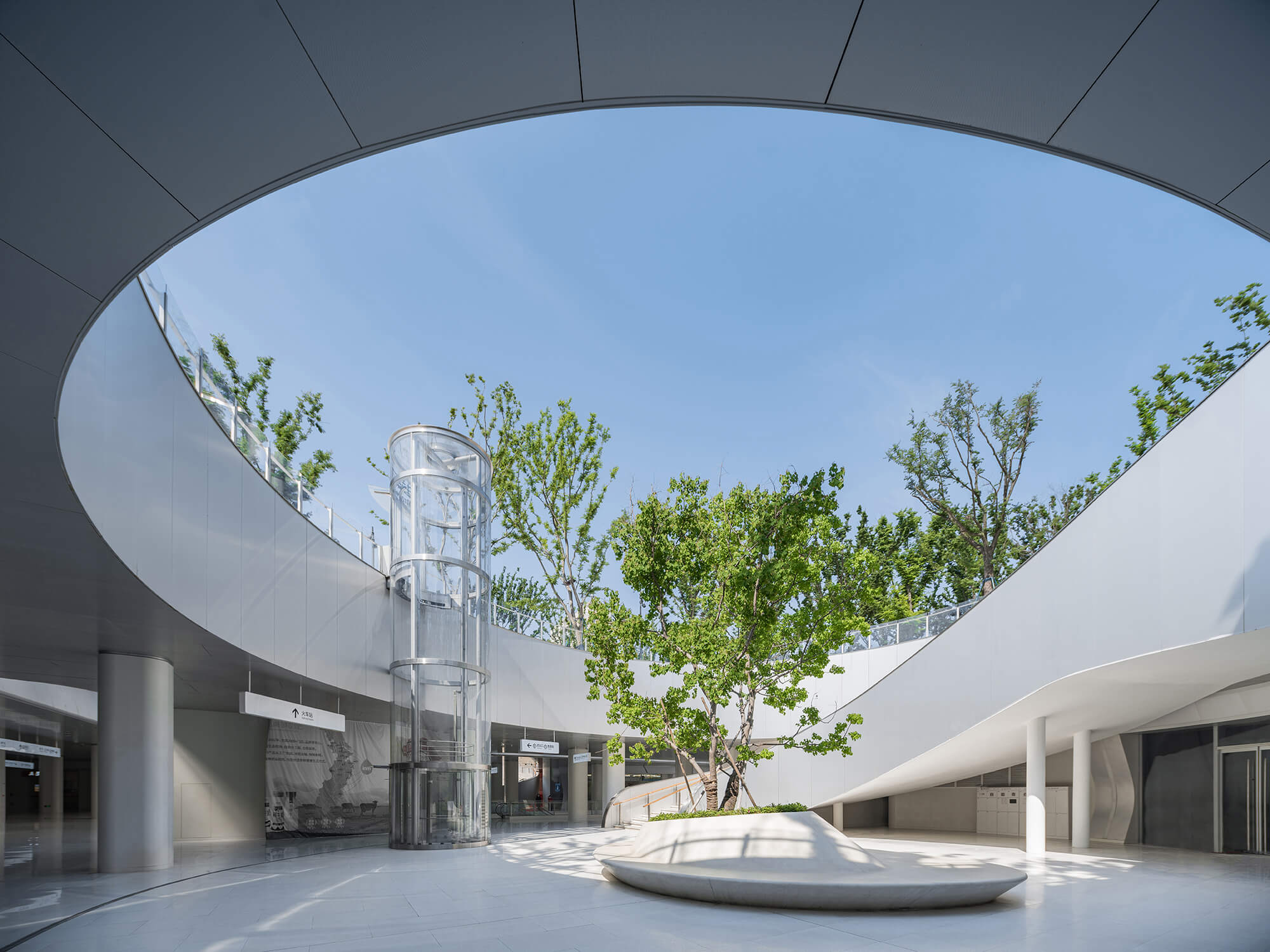
To the south, a square contains seven buildings with different culture and commercial uses, as well as a central lawn. Going forward, the lawn will become a venue for outdoor events like concerts and art festivals.








